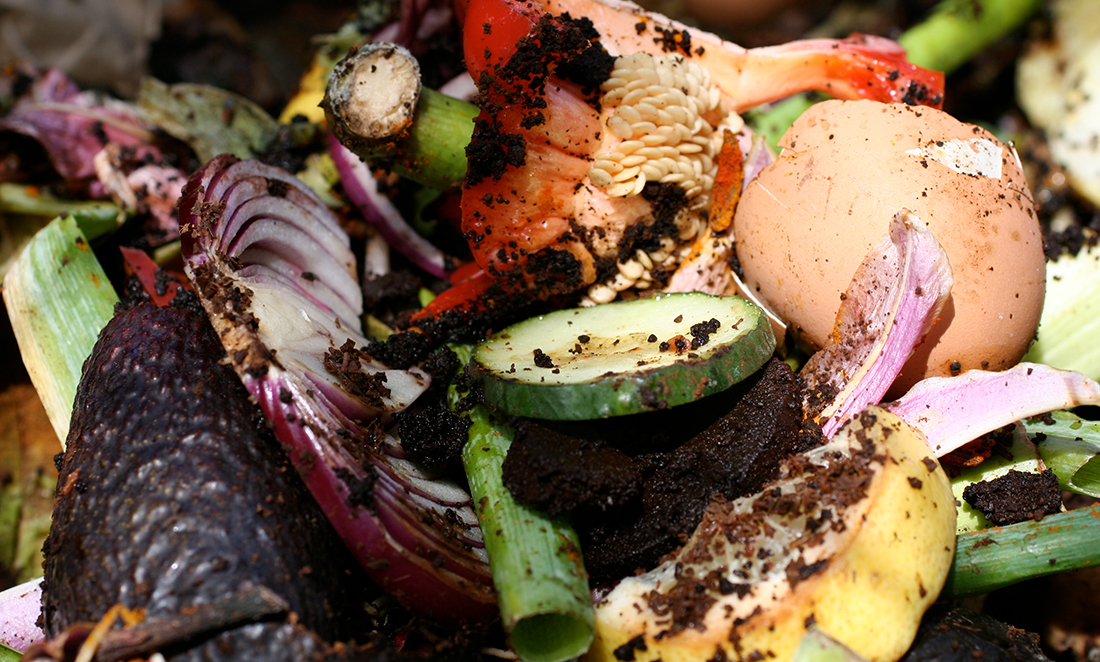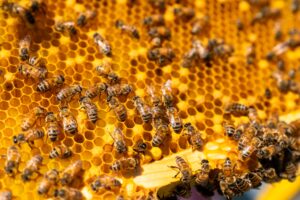Australians love food. Whether it’s Indian, French, Japanese or American cuisine, we’re keen for it. But unfortunately, there seems to be something else that we can’t get enough of: food waste.
This isn’t just bad because needy people miss out. When food goes into landfill, the environment seriously suffers.
Why? Because of carbon in food.

Yes, carbon. That pesky element so often talked about alongside climate change. But what does the carbon in your grandma’s lamingtons have to do with climate change? Well, depending on where your leftovers go, quite a bit.
GASBAGGING
All that carbon in your food is found in different kinds of molecules like carbohydrates, proteins and fats. When the carbon in your food goes to landfill, microorganisms break them down. This decomposition process produces methane gas.
Methane, which we’re all guilty of producing ourselves from time to time, is bad news for the climate. Methane traps significantly more heat than carbon dioxide, the most infamous greenhouse gas. That’s bad news for Planet Earth and everyone on it.
COMPOSTING TO THE RESCUE
Luckily, this problem can be solved with some clever science. More than 90 local governments across Australia run a food and garden waste composting program to lower the amount of organic material going to landfill. This hugely reduces methane production and takes a vital step in tackling greenhouse gas emissions.
To learn more, I spoke with Tim Youé of Southern Metropolitan Regional Council (SMRC), an organisation that deals with the waste for numerous Perth councils. While SMRC has been composting organic waste (collected from general mixed waste) for 15 years, problems with contamination have reduced the quality of compost.
SMRC is now trialling the Food Organics Garden Organics (FOGO) program with the City of Melville where 7000 homes separate their food waste out from general waste. Instead of just dumping food waste into their main bin, homeowners separate their food waste into a small kitchen caddy with a compostable liner made of cornstarch.

This makes it easy for homeowners to put all their organic material—both from the kitchen and garden—in one bin for composting.
“On average, between 20% and 30% of waste collected through kerbside bins could be classified as food waste,” says Tim.
“This system can produce a much cleaner stream of organic waste, resulting in the production of a higher-quality compost while reducing processing costs.”
SPRINKLE ON SOME O2
So how does SMRC’s composting work? It’s remarkably similar to the natural decomposition that happens in landfill. The only difference is that, by controlling the chemistry a little better, it ensures the process doesn’t produce methane.
Imagine you’re making a cake. If you want to win the blue ribbon at the Royal Show, you need to make sure you’ve got the ingredients just right. It’s the same with composting. And the vital ingredient for clean composting is oxygen.
Keeping a supply of oxygen to the composting process stops methane from being produced. But if organic material is starved of oxygen by being buried underground in landfill—well, the ground gets gassy.
SMRC’s composting process also ends up with a mix of organic chemicals known as humic substances. These chemicals are great at helping plants grow, meaning your composted kitchen waste can be used back on the farm to grow your next meal.
DOES IT WORK?
Does it ever! Since SMRC’s Waste Composting Facility was introduced in 2003, it has produced substantial environmental benefits. In 2017/18 alone it processed approximately 78,000 tonnes of waste and diverted 39,000 tonnes from landfill. That has saved 32,000 tonnes of greenhouse gases from going into the air.
“This is the equivalent of taking 7000 cars off the road,” says Tim.
By properly separating out organic food and garden waste, SMRC is aiming to divert even more organic material from landfill, further reducing greenhouse gas emissions.
SCALING UP
Of course, it’s still a challenge to pull this off on a council-wide scale.
Like all great ideas, we’re glad to see that this one is bound to go further. SMRC is currently looking to roll the FOGO system out further across the South Metropolitan areas, including the remainder of the City of Melville, the City of Fremantle and the Town of East Fremantle.
Sound like a good idea to you? Get on the phone to your local council today to get them on board.













